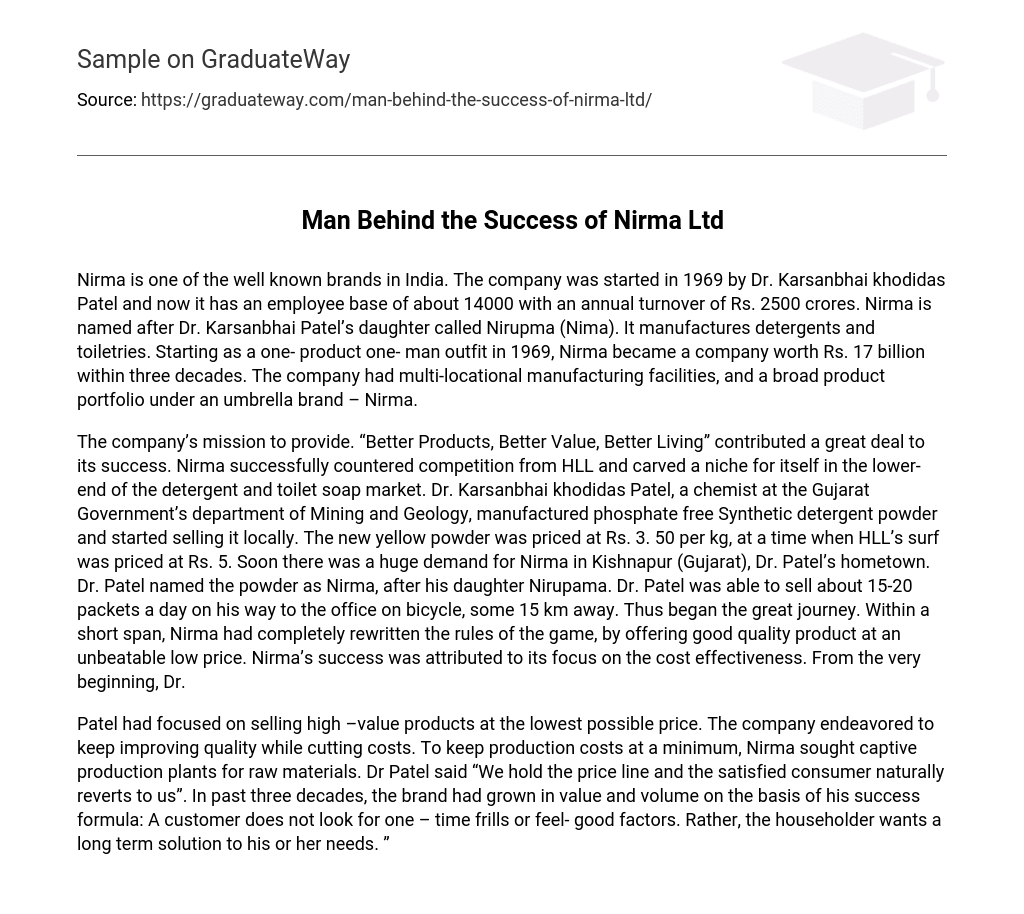Nirma is one of the well known brands in India. The company was started in 1969 by Dr. Karsanbhai khodidas Patel and now it has an employee base of about 14000 with an annual turnover of Rs. 2500 crores. Nirma is named after Dr. Karsanbhai Patel’s daughter called Nirupma (Nima). It manufactures detergents and toiletries. Starting as a one- product one- man outfit in 1969, Nirma became a company worth Rs. 17 billion within three decades. The company had multi-locational manufacturing facilities, and a broad product portfolio under an umbrella brand – Nirma.
The company’s mission to provide. “Better Products, Better Value, Better Living” contributed a great deal to its success. Nirma successfully countered competition from HLL and carved a niche for itself in the lower- end of the detergent and toilet soap market. Dr. Karsanbhai khodidas Patel, a chemist at the Gujarat Government’s department of Mining and Geology, manufactured phosphate free Synthetic detergent powder and started selling it locally. The new yellow powder was priced at Rs. 3. 50 per kg, at a time when HLL’s surf was priced at Rs. 5. Soon there was a huge demand for Nirma in Kishnapur (Gujarat), Dr. Patel’s hometown. Dr. Patel named the powder as Nirma, after his daughter Nirupama. Dr. Patel was able to sell about 15-20 packets a day on his way to the office on bicycle, some 15 km away. Thus began the great journey. Within a short span, Nirma had completely rewritten the rules of the game, by offering good quality product at an unbeatable low price. Nirma’s success was attributed to its focus on the cost effectiveness. From the very beginning, Dr.
Patel had focused on selling high –value products at the lowest possible price. The company endeavored to keep improving quality while cutting costs. To keep production costs at a minimum, Nirma sought captive production plants for raw materials. Dr Patel said “We hold the price line and the satisfied consumer naturally reverts to us”. In past three decades, the brand had grown in value and volume on the basis of his success formula: A customer does not look for one – time frills or feel- good factors. Rather, the householder wants a long term solution to his or her needs. ”





